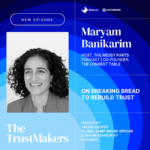By Ned Jones, Head of Advertiser Customer Success at Permutive
Consumers have more control over how they share their data than ever before. Privacy laws, browsing in cookie-blocked environments, hitting the “reject all” third-party cookies button, or disabling cookies at the browser level all signal that consumers have power over their data privacy. When given a choice, consumers say no to sharing data with third parties for advertising.
The result is that only 30% of the open web remains reachable to programmatic advertising today, creating a hidden web. The question arises: How can advertisers reach their total audiences while respecting the privacy choices of consumers?
Uncovering hidden audiences
One of the largest sources of hidden audiences in the UK and US is Safari. In the UK, one-third of consumers are browsing in Safari, and just over a third are doing so in the US. When consumers use Safari and other cookie-blocked platforms, advertisers lose the ability to target these audiences with advertising that relies on third-party cookies.
However, publishers have access to robust first-party data that encompasses behavioural, contextual, and declared signals from their audiences, enabling them to address 100% of audiences within Safari – and beyond. These publishers are a rich data source for advertisers and can offer an alternative to only reaching 30% of audiences.
A global beverage CPG brand, for example, course-corrected over-indexing in Chrome to reach double the audience that was previously hidden in Safari, helping solve their addressability problems. The campaign delivered 2.1x the number of impressions served in Safari vs Chrome, resulting in a 21% lower CPC and a 123% higher CTR compared to the benchmarks.
Platforms built on first-party, non-personally identifiable, consented data exist today, but it’s up to advertisers to build direct relationships with publishers who own the audience data.
Publishers are guardians of consumer data
The close proximity that publishers have to their audiences is transforming digital advertising. Premium publishers are in a strong position to gain consumer consent, and operate first-party data-rich environments.
Publishers are streamlining their supply chain to help boost opt-in rates and promote consumer safety by investing in adtech that is regulatory compliant and offers a privacy-led solution for when consumer consent isn’t present. Publishers know the types of content their audiences engage with online, what consumers’ interests are, and the behaviours displayed by visitors to their sites – all of which can’t be found anywhere else.
This is invaluable to advertisers, helping them to continue reaching consumers with relevant content, even as addressability shrinks. Importantly, publishers’ rich audience data enables advertisers to reach high-value audiences with targeted messaging, without infringing on their privacy.
Advertisers working in a more direct manner with publishers see the benefits of first-party data. For example, Penske Media Corporation’s first-party audience data allowed their advertisers to realise a 5x increase in performance (CTR) in campaigns that used only first-party data and drove 5X more efficient CPA for a clothing retailer when compared to using the brand’s first-party data.
Building stronger relationships
Advertisers can’t rely solely on their own first-party data, but they can scale their efforts by combining that first-party data with the cohorts and deeper insights that publishers have available. Using a combination of these data points, in a fully privacy-compliant way, advertisers can serve the ads that people are interested in seeing, in the moment.
The shift toward respecting consumers’ choice over how their data is used creates an ecosystem that acts responsibly to rebuild consumer trust, as it’s no longer using third-party data to target people everywhere they go online. As a result, supply chain transparency increases, with publishers having 100% visibility on where their data is being used, and advertisers being able to see where their spend is going.
Consumers are rewriting the rules of digital advertising. It’s not just about the deprecation of third-party cookies or regulatory pressure. The most important part of the next phase of digital advertising will be consumer choice. Finding a sustainable, cost-effective way of reaching consumers, combined with closer relationships between advertisers and publishers, is where it all begins.











